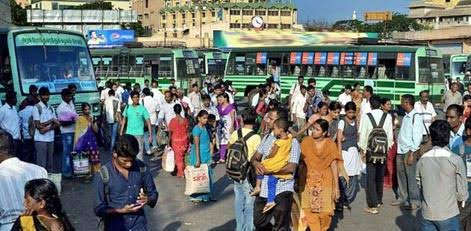Price Point trumps platform loyalty for e-commerce in India - IAMAI
Posted on: 05/Oct/2018 10:26:29 AM

The Internet and Mobile Association of India [IAMAI] has launched a report that finds users across age groups are keen on price-points and variety while shopping on e-commerce platforms. The report titled “Online Stickiness of e-Commerce Customers in India” provides interesting insights about differing behaviours across age groups for the three most popular e-commerce service categories in India: Online Retail, On Demand Transport Services and Online Travel booking.
The report finds that at an overall level, the age group between 18-24 years is “accommodating’ in their approach towards e-commerce with their focus being more on brands of the products and less concerned about price comparison, delay in refunds etc.
The report finds that the age group between 25-34 years is the least demanding category of all and is most comfortable with e-commerce services simply because of the convenience it offers. In comparison, the age group between 35-44 years are the most demanding age group; and consider give factors like refunds, response to queries, customization of services more importance.
The age group 45 and above are keen about the convenience and guarantees of online services, and are more interested in factors like promptness of customer service than cash-backs offered. This category needs the most convincing to purchase online and clearly look at e-commerce as a tool of convenience than bargain.
However irrespective of age group, every category is keenly aware of the price advantage the platforms offer and take discounts for granted vis-à-vis offline channels.
In contrast, ‘All time availability of cabs’ is the most important factor for Online transport services. The aspect of physical security is very important for female passengers across age groups and is often the most important factor for determining repeat choice of platforms for this kind of services. Males in the age group 25-34 are more concerned about prompt response than any other category, while males across the age-group 25-44 are keen on customized packages for monthly subscription, probably because in urban centres these services are being used for regular commutes.
For Online Travel Aggregator Services, price point is the most critical factor across all categories.
Many customers often use the platforms for searching while making a purchase directly from the vendor’s site as in the case of airlines tickets. Airlines loyalty programmes for frequent flyers are a very strong pull factor and many customers often directly access services of their favoured airlines directly without even comparing prices. OTAs however remain very popular for services like hotel booking and holiday package bookings (combining travel tickets and accommodation). Guarantee of quality of service and post check-in customer support are critical factors for these services and may determine repeat customers.
An interesting aspect of the report was a survey on the apps customers had on their phones for regular usage. It was found that On Demand transport apps were the most common apps found and used. Presence of OTA apps were comparatively low, as many of those services are often accessed via computer than mobile apps. OTA apps were mostly availed by the age group 25-44 range for working p professionals engaged in business related travels and require on-the-go travel and accommodation arrangements.
The age group 25-34 years had most variety of apps installed in their mobiles with the males having higher chances of having multiple apps of the same service category in their mobiles, while females seem to have a clear choice of service provider across categories and prefer to go for repeat purchase of services from these chosen platforms.
The study on what determines stickiness of customers for e-commerce services is a critical aspect at a time when the market across service categories is looking for consolidation. Online platforms for long have been focusing on customer retention over the initial move of customer acquisition. Despite the challenges of discount-based marketing campaign and the discourse on the futility of such strategies, customers in India still consider the price point as the most lucrative factor for e-commerce purchases. However, as the market matures and customers get accustomed to online services, each demographic segment seem to give preference to different factors that determine their choice of platforms. Going forward, the platforms will have to cater to each demographic group separately to retain those customers on their platforms.
The survey was conducted amongst 4700 ecommerce users across the country.







